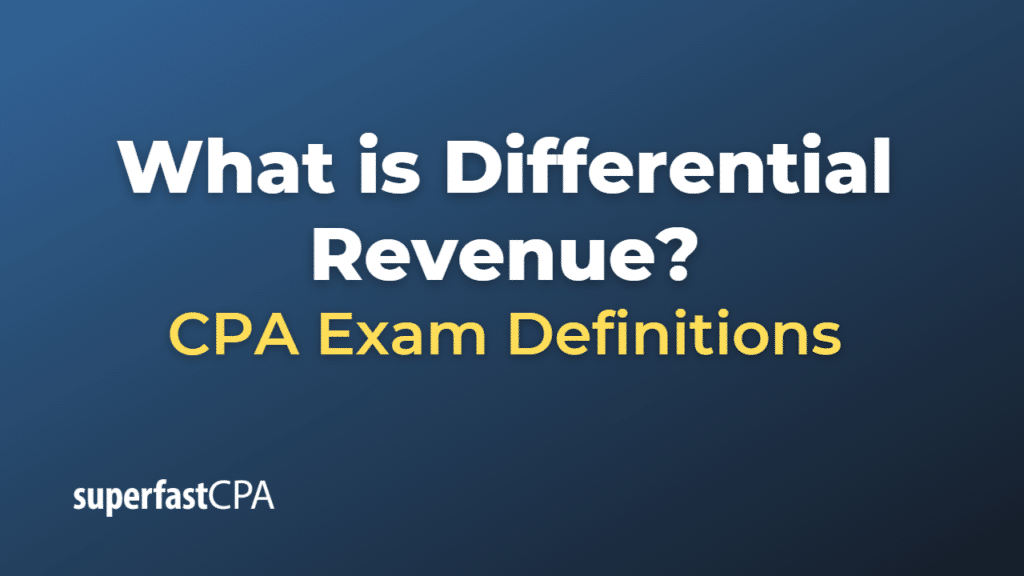Differential Revenue
Differential revenue is a concept used in managerial accounting and financial analysis to evaluate different potential scenarios or courses of action. It is the difference in revenue that results from choosing one option over another. This kind of analysis can be applied to virtually any decision that has an impact on revenues, whether it’s launching a new product, entering a new market, or changing a pricing strategy.
For example, if a company is considering two alternatives for a product line: (1) continue the current operation which generates $1,000,000 in annual revenue or (2) launch an updated product line which is expected to generate $1,200,000 in annual revenue, the differential revenue between these two alternatives would be $200,000 ($1,200,000 – $1,000,000). The company could then use this information, in conjunction with cost data and other factors, to decide whether launching the updated product line would be beneficial.
Keep in mind that differential revenue is only one part of the decision-making process. Decision-makers also need to consider differential costs, risk factors, strategic implications, and a range of other factors. Differential analysis as a whole allows for more informed and strategic decisions by focusing on the relevant costs and revenues of different alternatives.
Example of Differential Revenue
Here’s a practical example illustrating the concept of differential revenue:
Let’s say a book publishing company, ABC Publishers, currently sells a popular book for $20 each, selling 5,000 copies a year, generating a total revenue of $100,000.
Now, they are considering lowering the price to $15 to try and increase the sales volume. They predict that the lower price could help them sell 7,500 copies a year. The new total revenue would then be $112,500.
The differential revenue in this scenario is the difference between the revenue from the new pricing strategy ($112,500) and the revenue from the old pricing strategy ($100,000), which amounts to $12,500.
This means, by reducing the price, the company expects to increase its revenue by $12,500.
However, it’s important to remember that this is a simplified scenario. In reality, the company would need to consider many other factors, such as the cost of producing extra books, potential market reactions, and competitor responses, among other things, before making such a decision.













